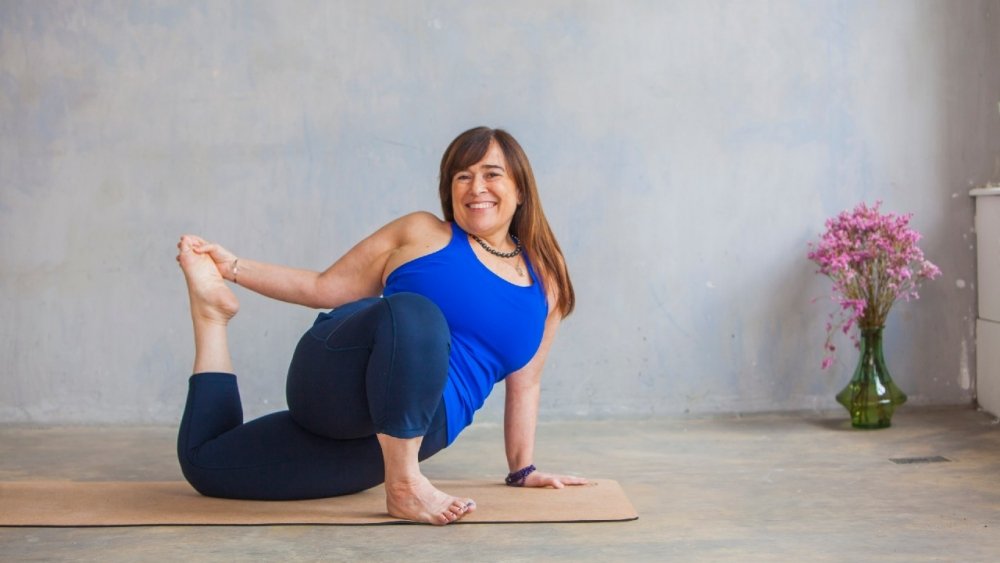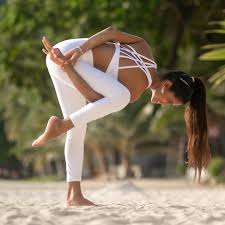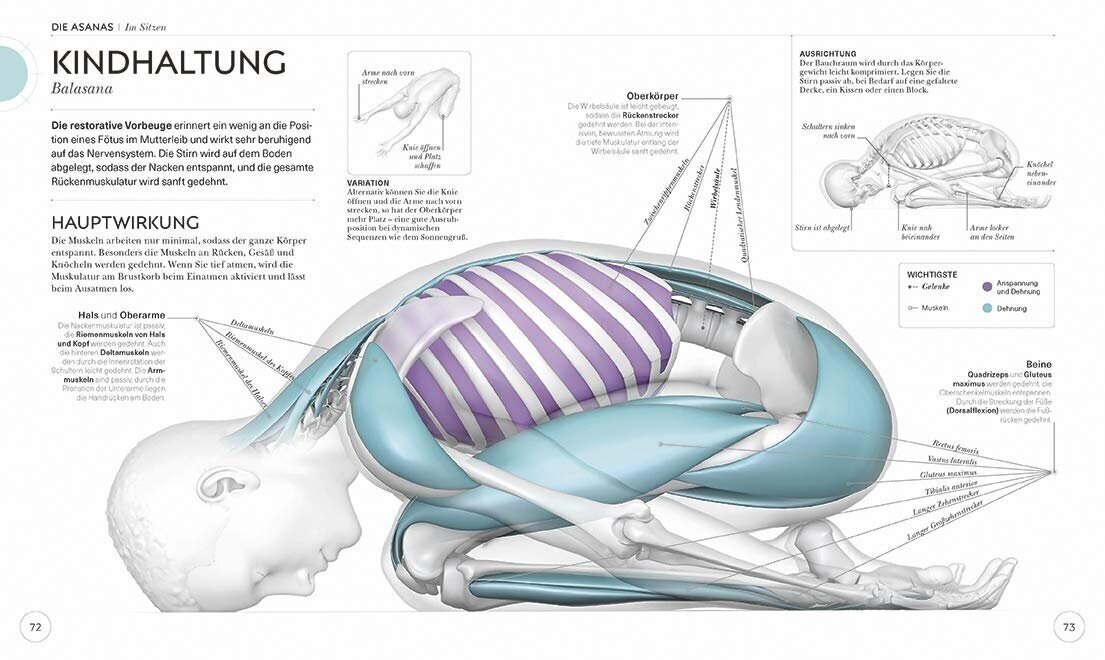
You can do yoga multiple times per week to lose weight and increase flexibility. Your body can adapt to as many practice sessions as possible, which could be as high as five to six per week. Yoga can be practiced two to three times daily. As long as you practice safe and effective yoga, you will find it to be beneficial for you.
Practicing yoga daily
Regular practice of yoga will help you remain calm and balanced. You can also use yoga to reduce stress and anxiety. It has been shown that yoga can reduce the symptoms of many mental disorders, including post-traumatic stress disorder. By learning to accept and flow with change, yoga can improve your quality of life.
There are many ways to incorporate yoga into your daily routine, including at home, at the gym, or at your favorite public place. The best thing with yoga is that it doesn’t have to be difficult physically. There are many styles of yoga that emphasize mental discipline and self awareness. Even when you are stuck in traffic for a while, notice your breathing. If you are walking to the grocery, notice how your feet feel and the air around your skin.

Practice yoga for more than one day per week
You can get many benefits from yoga. Even if you practice it once a week the benefits will likely be shorter than if your practice is repeated twice or more times per week. To avoid straining your muscles, joints, or ligaments, it is important to have a variety of practice. Start practicing at home, in your lunch break, whenever you have five to spare.
Yoga daily can help you improve your balance. You will be able to relax more often between workouts, have better sleep habits, and cope with stress. Although yoga is recommended to be practiced every day, you can practice it for as many as five days a week if you're able to spare the time.
Yoga can help you be flexible
You can improve your flexibility by doing yoga every day. It can improve flexibility and help with joint stiffness and pain. It is beneficial for arthritis sufferers, who have inflammation and pain in their joints. This condition is estimated to affect more than 10,000,000 people in the UK. Yoga can help.
The best way to increase your flexibility is to practice yoga frequently. You can be more flexible if you do five minutes of yoga each day. It is also easier for you to incorporate it into your day. You'll find it easier to incorporate yoga into daily life. In addition, if you practice yoga every day, you'll be able to train your autonomic nervous system, which affects your flexibility. Yoga can reduce tension and stress.

Practicing yoga for weight loss
Although there are many benefits to practicing yoga daily, the most important thing is to put in the effort. Regularly practicing yoga can improve circulation, reduce cholesterol, and even make you feel better. It can slow down the progression of heart disease if it is combined with healthy lifestyle habits. Practicing yoga can also reduce stress.
If you want to lose weight, it is important to do yoga every day. To lose more weight, increase the intensity and duration of your practice. Beginners should start with a 20-minute session and then increase in intensity. You should also take a rest day every other week to avoid overexertion.
FAQ
Does yoga make me look like a hunk?
No! You will not look like a Hollywood star after practicing yoga. You'll appear leaner, stronger and more flexible after practicing yoga.
What is yoga?
Yoga is based upon alignment, breath control. Meditation and stillness principles. If done properly, yoga can bring peace and calm to the practitioner.
Your body should be warmed up before you begin any yoga class. You might begin with stretches such as forwarding bends (bending forward), reverse bends (bending backward), twists and side bends. These moves are great for loosening tight muscles and preparing you to do deeper poses.
Next, you will need to balance in the "standing" pose. Standing with your feet straight, keeping your arms straight, the "standing" pose requires you to look toward the ground. Your body should feel rooted and centered.
The next step is to move into deep stretching positions. In these poses, you lie face up on the ground, bend your knees, lift one leg, then the other, and stretch your spine in every direction possible. Grab onto something sturdy to keep you from falling. If you don't have anything to grab onto, rest your hands on the ground beside you.
After doing all these poses, you will move into a series of standing poses. These are the mountain pose and warrior pose as well as the downward facing dog, upward facing dogs, plank pose and last pose.
It is important that you breathe deeply and slowly while doing yoga. Deep breathing will not only purify your lungs but will also calm your mind. By focusing on your exhales as well as your inhales, you can achieve deep breathing. Consider counting every time you take a deep breath.
Even while cooking, you can do yoga anywhere! Follow the same steps, except that you should sit up instead of lying down.
Start with 10 minutes daily if you're new to yoga. You can still benefit from yoga, regardless of your age.
Is yoga helpful for people with chronic diseases?
Yoga may help people with chronic illnesses such as diabetes and heart disease by improving overall fitness, reducing stress, and increasing flexibility.
Yoga is also beneficial for many other conditions like arthritis, asthma, depression, fibromyalgia and high blood pressure.
Is it necessary to be flexible in order to practice yoga?
It all depends on the type of yoga that you choose. You may need to be flexible in some styles of yoga, while others will help you build muscle strength.
Also, different levels of flexibility are required depending on the style of yoga. Beginners might be able to just stretch their arms straight up. Intermediates may only need to reach overhead. Intermediate practitioners might need to bend forward to touch their toes. Advanced practitioners might need to do deep twists or bends.
What are the best kinds of yoga mats to use?
There are many types of yoga mats. The size, price, durability, and cost of a yoga mat will all play a role in your decision.
A quality mat should be thick enough not to scratch your floor, but thin enough so that you can move it quickly.
A cheap mat may not provide adequate support.
Can I take classes together?
It all depends on what class you are in. Private lessons may be offered only by some teachers. Other teachers offer group classes, where students can get to know each other.
Some studios offer small classes called "classes in a class," which allows you to meet people with similar interests.
How does yoga influence mental health?
Yoga is an ancient Indian practice. It was developed as a means to relieve stress and relax. Many people now use yoga to deal with anxiety, panic attacks (panic attacks), depression, chronic pain, insomnia, and other conditions.
Yoga may also improve physical symptoms such as headaches, backaches, arthritis, and high blood pressure. Many yoga practitioners report feeling happier and calmer.
Statistics
- In comparison, a 125-pound person is estimated to burn 135 calories in 30 minutes of walking (at a pace of 15-minute miles) and 210 calories bicycling at a moderate pace on a stationary bike. (everydayhealth.com)
- Lock in 25% off your Founding Member rate. (corepoweryoga.com)
- A 2020 review of 27 studies (1,805 total participants) of yoga interventions in children or adolescents found reductions in anxiety or depression in 70 percent of the studies, with more promising results for anxiety. (nccih.nih.gov)
- According to the Agency for Healthcare Research and Quality, falls are incredibly common among older adults in nursing facilities. Even the simplest ones can increase the risk of death (24). (healthline.com)
- The people in the yoga group were 37 percent more likely to have quit smoking by the end of the 8-week program. (nccih.nih.gov)
External Links
How To
Is yoga a good way to exercise?
Yoga is not just for people looking to lose weight. Yoga can help you improve flexibility, balance and coordination as well as strength, focus, calmness, and coordination.
Yoga isn't just a form of exercise. These poses can be used to help you relax and meditate. They help us to improve our posture, concentration, and breathing.
Yogis are those who practice yoga. Yogis follow various forms of yoga, including Hatha, Ashtanga, Iyengar, Vinyasa, Bikram, Kundalini, Yin Yang, and Restorative.
There are many types and styles of yoga. But they all share similar goals. Each type is focused on different aspects. Yoga styles include Hatha, pranayama (meditation), and pranayama (pranayama).
You don't need any equipment for some yoga exercises:
-
Sun Salutation: This series of 12 postures begins with a forward bent, and then 10 additional poses.
-
Warrior Pose – While holding a stick/staff, a warrior position is achieved.
-
Triangle Pose - This pose involves lifting one leg behind you and bending at the knee.
-
Standing Forward Bend- This is when you lie down straight on the ground, with your legs straight. Then, fold forward to the waist.
-
Seated Twist – This pose can be performed while seated on either a chair or a mat.
-
Cobra Pose – This is a pose where you lie flat on your back and raise your arms above your head.
-
Child's pose - This is when you are lying on your back, face up.
-
Cat/Cow Pose- This is a combination of a cat/cow pose. Place your upper body on the ground and lie down. Next, roll onto your back and place both of your hands under you shoulders.
-
Head Tilt--This pose requires that you tilt your head back with your eyes closed.
-
Shoulder stand - This position involves standing straight up with your arms and feet raised above the head.
-
Tree Pose: This pose requires you to kneel on your knees, with your hands under your shoulders.
-
Bow Pose – Bend forward from the hips to complete this pose. Then, place your palms on top of the ground and bend forward.
-
Corpse Pose: This pose can only be held for five seconds.
-
Mountain Pose: This pose is known as mountain pose, because it requires you to stand tall and keep your spine straight.
-
Legs Up the Wall Pose - This pose is executed by hanging upside-down from a wall.
-
Side Angle Pose -- This pose requires you to lean against a wall and place your right arm in front of the wall.
-
Plank Position- When you lie on your stomach and extend your left hand and right foot apart, you can achieve this position.
-
Bridge Pose – This is a pose where you balance on your elbows, and toes.
-
Reverse Table Top Poses - To achieve this pose, lie on your stomach while reaching your arms toward your ceiling.
-
Handstand - This position requires balance and strength. This pose can be done by placing your hands between two walls, or using a door frame.
-
Half Moon Pose - This pose is also known as Hero Pose. This is achieved by standing on your hands, and toes.
-
Headstand (or Hold) - This requires strength and balance. This pose is possible on a brick wall or on a doorframe.
-
Forearm Balance: This pose requires that your forearms rest on the tabletop.
-
Spinal Twist- This pose involves lying on your belly and reaching your arms.
-
Supported Bound Angle Pose - This pose requires support and balance. To support your body, you will need to locate a strong object such as a tree branch or an old beam.
-
Wide Leg Forwardfold - To achieve this pose, spread your legs apart while touching your toes.
-
Single Pigeon Pose – This pose is similar the the wide leg forward fold, but has only one limb extended.
-
Extended Puppy Dog Pose - This pose is very relaxing. This is done by stretching your legs outwards and bending your knees.
-
The Forward Bend pose involves bending forward and squatting cross-legged.
-
Crow Pose is a difficult pose that can be very rewarding once you have mastered it. It is done by raising your arms above your head and lowering them until they parallel to the floor.